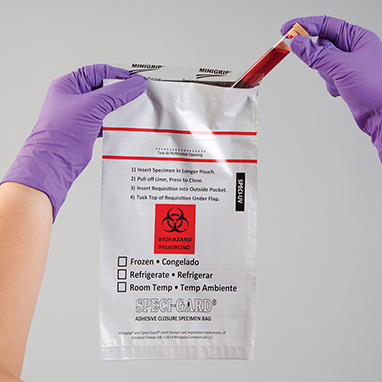

What To Know When Transporting Medical Specimens And Samples
Transporting medical specimens and samples is a critical task that requires careful handling to ensure the integrity of the samples and the safety of those handling them. Here's what you need to know:
Regulations and Guidelines: Familiarize yourself with local, state, and federal regulations governing the transportation of medical specimens. These regulations may include specific packaging, labeling, and documentation requirements.
Proper Packaging: Use appropriate containers and packaging materials designed for transporting medical specimens. Ensure that containers are leak-proof and well-sealed to prevent contamination and spills.
Labeling: Clearly label all specimen containers with essential information, including patient details, the type of specimen, and any special handling instructions. Use standardized labels that comply with regulatory requirements.
Temperature Control: Maintain the appropriate temperature during transport, especially for specimens that require refrigeration or freezing. Use insulated containers, cold packs, or dry ice as needed.
Chain of Custody: Document and maintain a chain of custody record for each specimen. This record should include information about who collected the specimen, who transported it, and who received it.
Documentation: Complete all necessary paperwork, including requisition forms and manifests, accurately and legibly. Keep copies of documentation for your records.
Training: Ensure that all personnel involved in transporting medical specimens receive proper training on handling and transporting hazardous materials and biohazardous substances. This includes understanding potential risks and how to mitigate them.
Safety Equipment: Provide personnel with the necessary personal protective equipment (PPE), such as gloves, lab coats, and safety goggles, when handling specimens that may pose a risk of infection.
Emergency Response: Be prepared for emergencies. Have spill kits and appropriate disinfectants on hand in case of accidental spills or leaks.
Transportation Vehicles: If using dedicated transportation vehicles, ensure they are properly maintained, clean, and equipped with the necessary safety features.
Timely Transport: Minimize transport times to ensure that specimens reach their destination within the required timeframe, especially for time-sensitive tests.
Communication: Establish effective communication channels with the receiving laboratory or facility to coordinate specimen delivery and confirm receipt.
Documentation Retention: Maintain records of specimen transportation, including dates, times, temperatures, and signatures of individuals involved.
Security: Protect specimens from theft or unauthorized access during transport. Use tamper-evident seals on containers if necessary.
Compliance: Regularly review and update your procedures to ensure ongoing compliance with changing regulations and best practices in specimen transport.
Transporting medical specimens and samples is a critical part of healthcare diagnostics and research. Adhering to these guidelines and staying informed about best practices will help ensure the accuracy of test results and the safety of healthcare workers and the public.
Related Posts
© 2025 Invastor. All Rights Reserved

User Comments